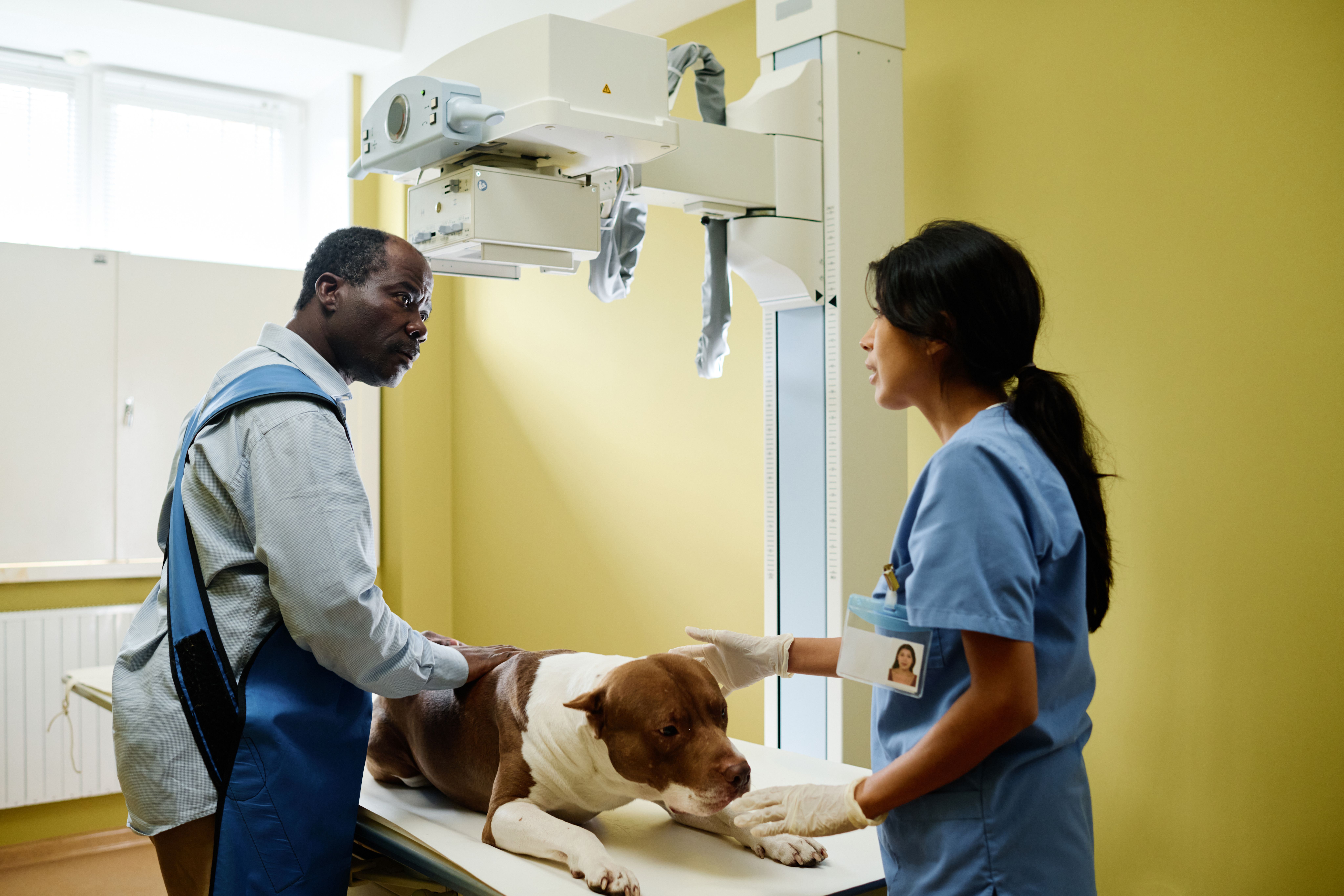In the realm of diagnostics, obtaining a diagnosis without resorting to a biopsy is generally more favorable for the client. A biopsy should generally not be seen as a first line diagnostic. However, in certain cases, biopsy can be the first choice such as in the skin and bones in which these areas have a diagnostic efficiency with about 90% of cases.1
In a 2024 Veterinary Meeting & Expo session, Brittany Ciepluch, DVM, MS, DACVS-SA, ACVS Fellow Surgical Oncology, stated, “For bones, cytology is my preference. Cytology is highly diagnostic for bone lesions. I mostly see neoplasia, so maybe that’s my bias, but if you can get away with doing cytology—that is the preferred method.”1 Additionally, the decision to perform a culture may come into play, particularly when diagnosing infections, where obtaining tissue samples takes precedence over surface swabbing since the infection lives inside the tissue.
Skin biopsy
Indications
- A skin biopsy can be indicated when lesions are acute and severe. This can occur with drug eruption dermatitis.
- A culture on a biopsy would be indicated in a specific case in which the therapy can be associated with significant adverse effects in the patient. “For example, if you have an infection that is just as susceptible to [antibiotics like] Amikacin, that therapy can significantly affect that patient. So, you want to make sure you’re guiding your therapy in a pointed direction. So, a culture on a biopsy sample would be indicated,” Cieplich said.
- When neoplasia is suspected. This can be indicated if there is a nodule on the skin or a chronic, nonhealing ulcerative lesion.
- Any unusual skin lesions. Ciepluch explained she did a biopsy for a case in which a 2-year-old golden retriever had a nonpainful growth on the side of her face.
- When lesions develop while on therapy or fail to respond to therapy.
Where to collect a sample
Overall, primary lesions should be sampled. These could be a papulue, pustule, nodule, or erythema. Collect secondary lesions if they are extensive and mark these samples as such. Secondary samples would come from any crusts, scale, or collarettes.
- For depigmenting lesions, Ciepluch recommended getting your sample in the depigmented section or on the margin between the depigmentation and darker skin.
- For ulcerative lesions, take from the margin of the intact skin and the lesions, rather than directly in the middle of the ulcer.
- For alopecia, Ciepluch stated these cases need 3 samples. One from the most alopecic lesion, one from a partially haired region, and one from a normal skin area.
- For nodules, take a sample from the full nodule with an excisional biopsy.
When sending a skin biopsy to the dermatopathologist, send the following information:
- Complete history
- Description of lesion(s)
- Location of lesions(s)
- Presence or absence of pruritus
- Duration of lesions
- Pertinent medical history
- Response to various treatments
- Current medications
- List of differential diagnoses
- If possible: a lesion map and photo of lesions on the patient
Some other tips for collecting samples include the following:
- Never scrub the skin—this can potentially remove important diagnostic material.
- Use a local anesthetic. In a study testing 3 different local analgesics, Lidocaine was concluded to be the best choice for skin biopsies.2
- Position the punch biopsy instrument over the center of the lesion.
- Rotate the punch in one direction to avoid additional trauma.
- Do not crush the skin.
- Consider antibiotics before taking a biopsy if needed.
- Stop any glucocorticoids for 2 weeks before the biopsy. Injectables need to be stopped 6 weeks before.
Bone biopsy/cytology
For a bone diagnosis, Ciepluch recommended using cytology because, in her opinion, it is easier, less expensive, safe, and has a high accuracy. The only weakness with cytology is that histopathology agrees with only about 27% of cases with non-neoplastic bone lesions.3 “So if you’re not suspicious of neoplasia, maybe a bone biopsy will be your better bet,” Ciepluch said. However, Ciepluch stated that if your patient/client is considering a limb spare procedure, then avoid doing a bone biopsy.
In general, if cytology doesn’t give the diagnosis or it is not an option, then a bone biopsy can still be used. “A couple of additional principles for bone biopsy: we want to have strict asepsis, definitely stricter than skin or mouth biopsies. Hemostasis is important. You want to get deep into the bone, so you need to penetrate that near cortex, you don’t want to penetrate the far cortex. And then, offering the owners the risks that come with [this diagnostic], which include hematoma, infection, fracture, and possibly getting a non-diagnostic sample,” Ciepluch said. To avoid providing a nondiagnostic sample, Ciepluch stated to make sure you are taking the biopsy from the middle of the lesion and getting far enough in that you get into the medullary canal.
References
1. Ciepluch B. Perfecting the biopsy: Skin, mouth, and bones. Presented at: Veterinary Meeting & Expo; Orlando, Florida; January 13-17, 2024.
2. Henfrey JI, Thoday KL, Head KW. A Comparison of Three Local Anaesthetic Techniques for Skin Biopsy in Dogs. Vet Dermatol. 1991;2(1):21-27. doi:10.1111/j.1365-3164.1991.tb00106.x
3. Sabattini S, Renzi A, Buracco P, et al. Comparative Assessment of the Accuracy of Cytological and Histologic Biopsies in the Diagnosis of Canine Bone Lesions. J Vet Intern Med. 2017;31(3):864-871. doi:10.1111/jvim.14696
